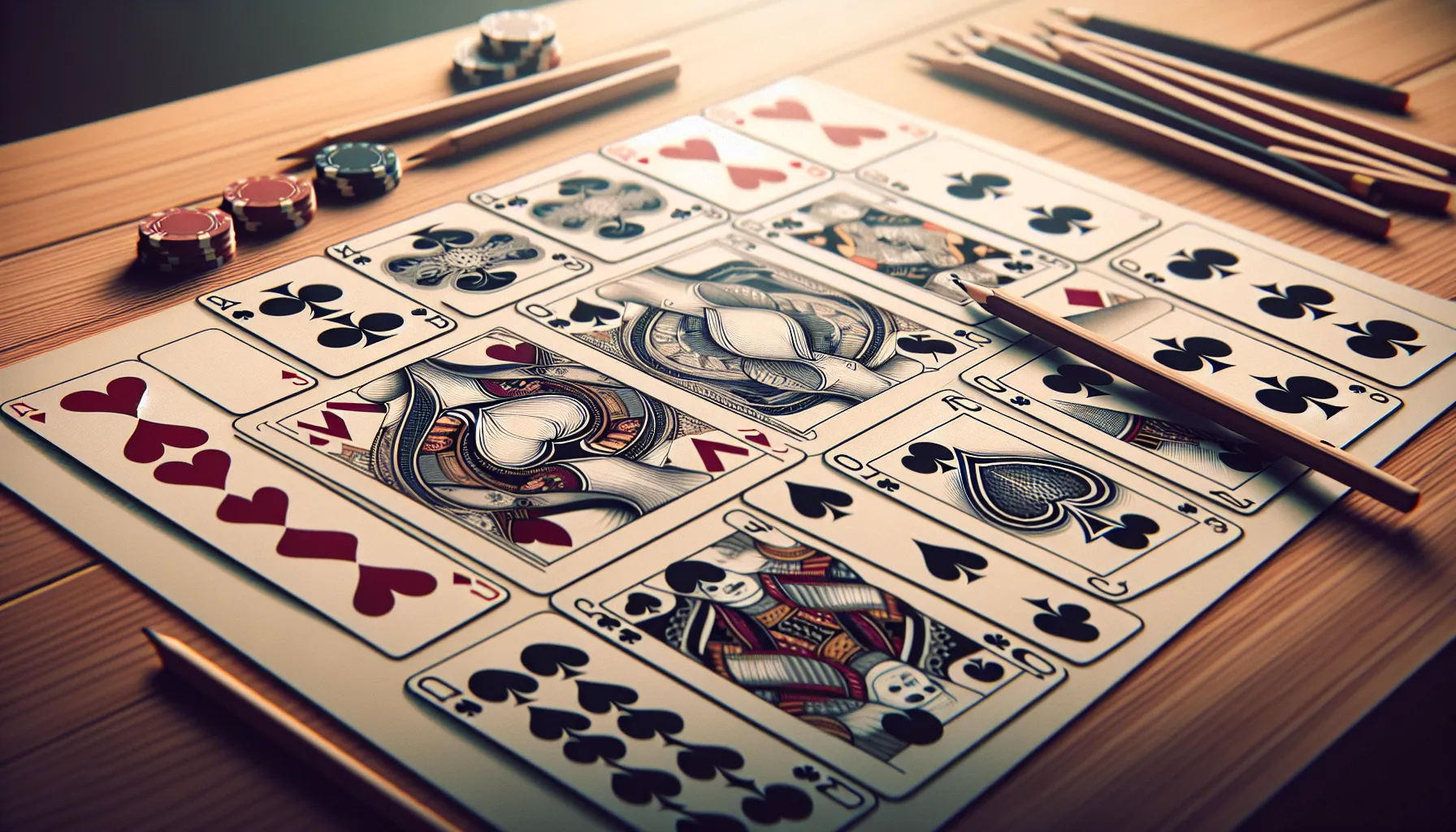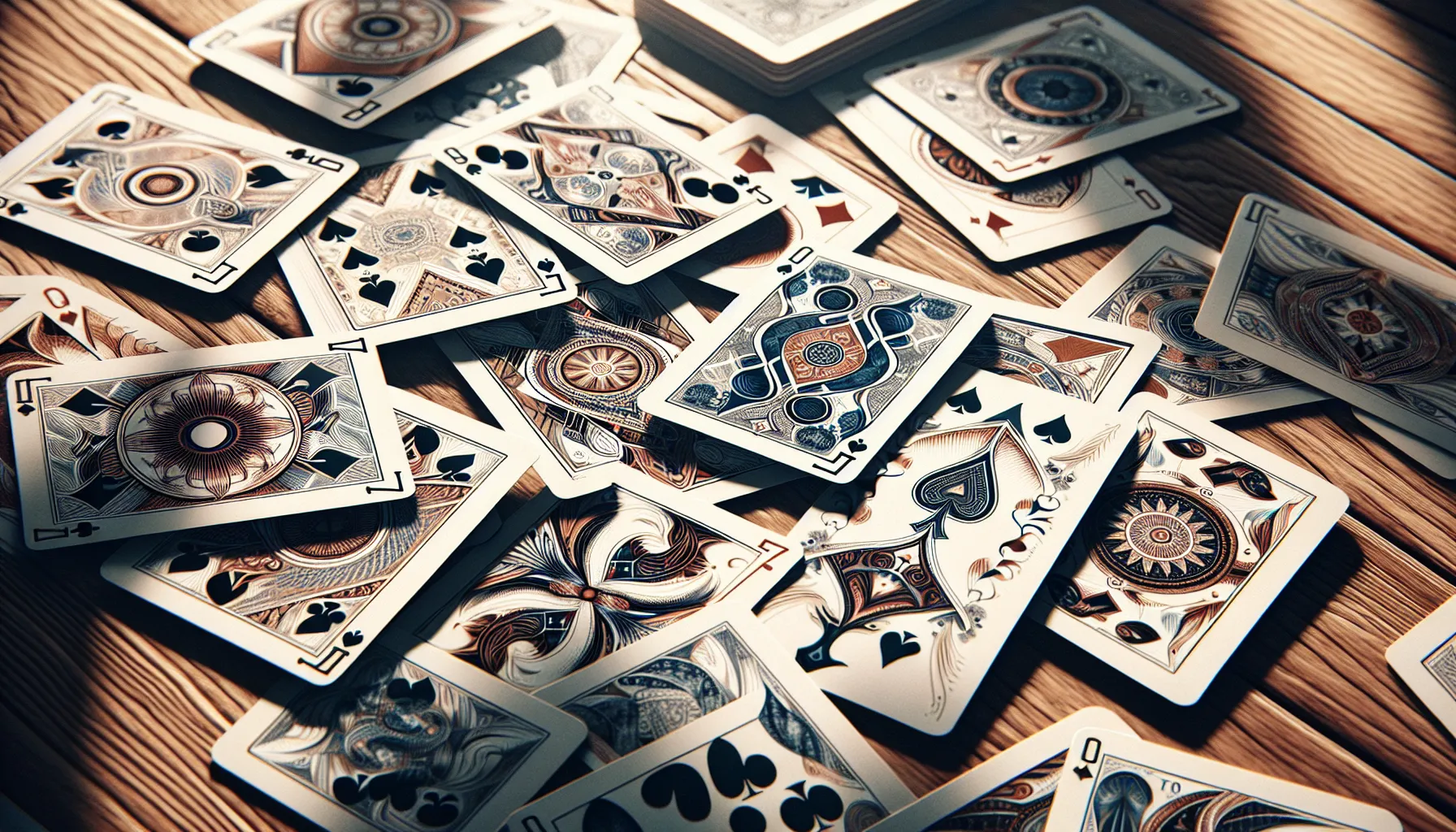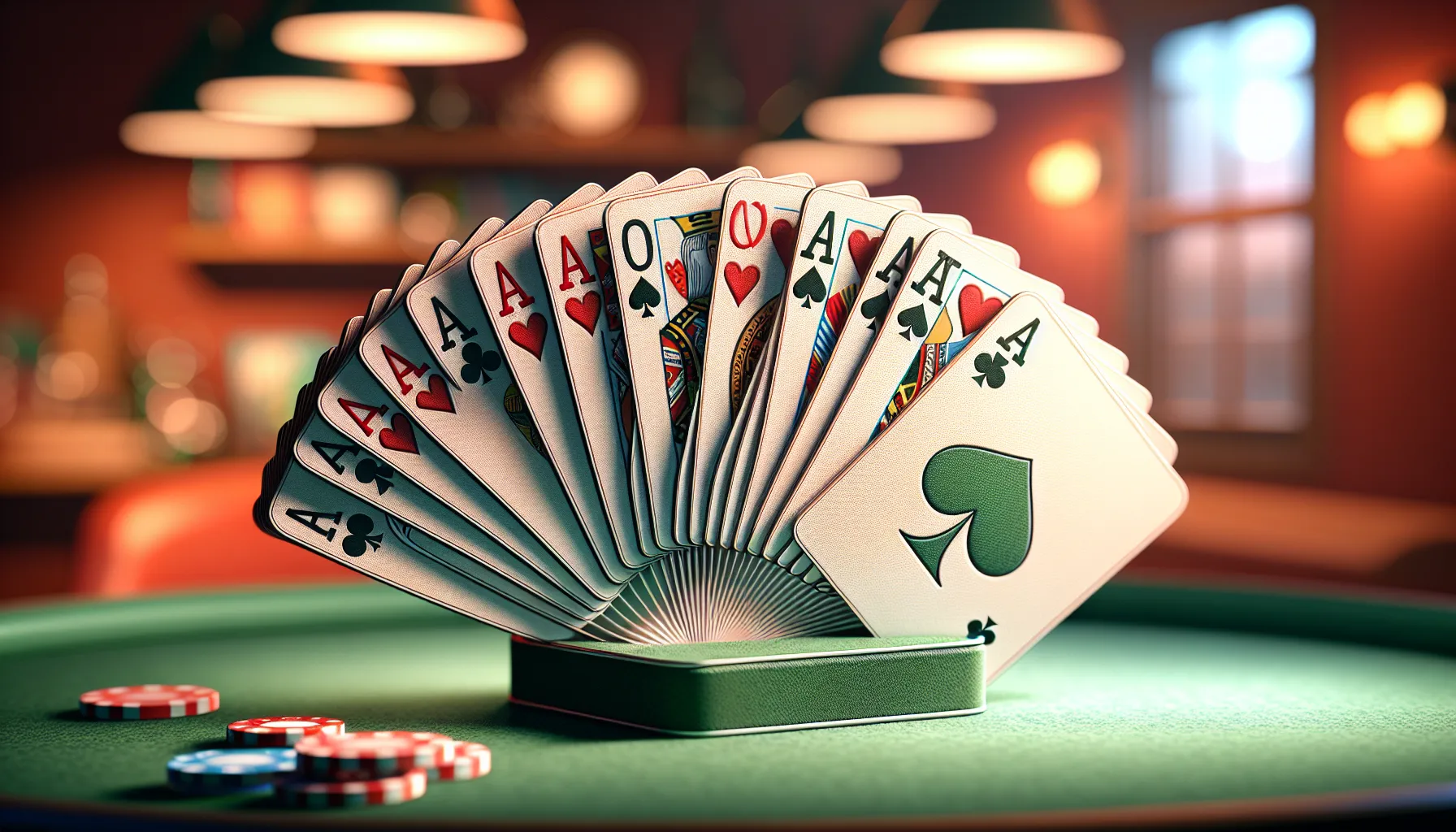When you think about a standard deck of 52 cards, it’s more than just a tool for games—it’s a fascinating playground for probability. Each card represents a unique combination of suits and ranks, creating endless possibilities for calculations and outcomes. Whether you’re a math enthusiast or a curious card player, understanding how these cards are divided in probability opens up a world of insights.
From the chances of drawing a specific card to the likelihood of forming certain hands, probability helps you break down the seemingly random nature of a shuffled deck. By exploring these divisions, you’ll uncover patterns and probabilities that make card games more strategic and exciting. It’s not just about luck; it’s about the numbers working behind the scenes.
Understanding The Basics Of A 52-Card Deck
A standard deck of 52 cards forms the foundation for various probability problems. Each card contributes to a unique set of combinations and events in mathematical and strategic analysis.
Composition Of A Standard Deck
A standard deck consists of 52 cards divided into four suits: Hearts, Diamonds, Clubs, and Spades. Each suit contains 13 ranks—Ace, numbers 2 through 10, and face cards (Jack, Queen, and King). Half the deck includes red suits (Hearts and Diamonds), while the other half are black suits (Clubs and Spades).
Face cards total 12, with three in each suit. Aces appear once per suit, forming a vital element in various probability-based calculations.
Key categories include:
- Suits (4): Hearts, Diamonds, Clubs, Spades.
- Ranks (13 per suit): Ace, 2-10, Jack, Queen, King.
- Colors (2): Red (26 cards) and Black (26 cards).
Importance In Probability Concepts
A 52-card deck serves as an exemplary model for teaching probability. Each card’s predictable structure allows precise calculations of random events. For instance, the probability of drawing a specific card (e.g., Ace of Spades) is 1/52, while selecting a card of a certain suit (e.g., Diamonds) is 13/52 or 1/4.
Practical uses include:
- Single-event probabilities: Calculating odds of drawing specific cards, such as Queens or Red cards.
- Combinatorics: Analyzing hand combinations, such as pairs or three-of-a-kind in poker.
- Conditional probabilities: Evaluating outcomes based on drawn cards, such as successive Reds.
Understanding this system enhances strategic gameplay and strengthens your grasp of fundamental probability.
Exploring The Division In Probability

A standard 52-card deck offers a perfect framework for exploring probability due to its fixed structure. By analyzing how cards divide into suits, ranks, and specific probabilities, you can understand the mathematical principles behind card games.
Dividing By Suits
Each of the four suits—Hearts, Diamonds, Clubs, and Spades—contains 13 cards, accounting for an equal distribution. The probability of drawing a card from a specific suit equals 1/4, as there are 13 cards in the chosen suit out of the total 52. For instance, if you aim to draw a Heart, the chances stand at 25%.
When considering combinations between suits, the overall composition provides scope for calculating intersecting probabilities. For example, the probability of drawing a red card (Hearts or Diamonds) is 1/2, as red suits consist of half the deck.
Dividing By Ranks
The deck includes 13 ranks: Ace through King. Each rank features four cards, one from each suit, which creates a uniform spread. The probability of selecting a card of a given rank is 4/52 or 1/13. For example, if you’re seeking to draw an Ace, the likelihood rests at approximately 7.69%.
Rank-based divisions also allow for advanced probability calculations, such as determining the odds of drawing a face card. Since face cards (Jack, Queen, King) total 12 across all suits, the probability of picking one is 12/52, simplified to 3/13.
Specific Card Probabilities
Each card in a standard deck carries a unique combination of rank and suit, making it one of 52 distinct possibilities. The probability of drawing any specific card, such as the 4 of Clubs, is therefore 1/52. This uniformity extends to all individual cards in the deck.
If your calculation involves conditional logic, the probabilities adjust accordingly. For example, the chance of drawing a Queen of Spades given that you’ve already drawn a Spade reduces to 1/13, as the total Spades now equal 13.
Key Scenarios In Probability Using 52 Cards

A standard deck of 52 cards offers several probability scenarios integral to understanding random events. Each scenario involves calculating outcomes based on the fixed composition of suits and ranks.
Drawing A Single Card
The probability of drawing any single card depends on the total number of cards in the deck. With 52 unique cards, the chance of drawing a specific card, like the Ace of Hearts, is 1/52. If focusing on a categorical subset, like a suit, the probability adjusts accordingly. For example, the likelihood of drawing any Heart is 13/52 or 1/4. Selecting a red card (Hearts or Diamonds) is even more likely at 26/52 or 1/2.
Drawing Multiple Cards
When drawing multiple cards, the probabilities shift based on whether the draw is with or without replacement. In draws without replacement, the total number of available cards decreases after each draw. For instance, the probability of drawing an Ace on the first draw is 4/52 or 1/13. If an Ace is removed, the chance of another Ace drops to 3/51. Conversely, with replacement, the deck returns to its original composition each time, keeping the probability of drawing an Ace consistent at 1/13 for each draw.
Conditional Probabilities
In conditional probabilities, previous events influence the likelihood of subsequent outcomes. If you’ve drawn a Spade, the chance of pulling a Queen of Spades on the next draw becomes 1/13, as only 13 Spades remain. Similarly, if a Spade is removed, the probability of drawing another Spade decreases to 12/51. These conditions illustrate how outcomes are interdependent when cards are not replaced.
Practical Applications Of Card Probabilities

Card probabilities play a crucial role in various fields, from entertainment to data analysis. Understanding these concepts deepens your insight into games of chance and enhances statistical research.
Games Of Chance
Card probabilities are fundamental in games requiring strategy. In poker, knowing the odds of drawing specific hands, such as a flush (approximately 0.198% for 5 cards) or a full house (0.144%), helps optimize decisions. In blackjack, calculating the probability of exceeding 21 after a hit influences whether you’ll take additional risks. These games rely on your ability to predict outcomes based on deck composition.
In solitaire, probabilities determine the likelihood of completing the game under specific conditions. If you analyze draw patterns in Texas Hold’em, estimating the probability of improving your hand on the flop or river becomes strategic, impacting long-term success.
Statistical Studies And Simulations
Card probabilities support experiments in statistical studies. They provide a controlled environment for teaching probability concepts, such as independent and conditional probabilities. For example, you can simulate the chances of drawing two face cards consecutively (3/51 after a face card is drawn first).
In data science, simulations using decks model real-world random events. Analyzing shuffling methods ensures randomness, validated by calculating uniformity in card distributions. By applying these principles, you’ve enabled the testing of algorithms and theories in practical and academic settings.
Conclusion
Exploring how 52 cards are divided in probability opens up a fascinating world of mathematical precision and strategic insights. By understanding the structure of a standard deck and its probabilities, you can appreciate how calculated decisions often outweigh sheer luck in card games. Whether you’re playing for fun or analyzing probabilities for practical applications, this knowledge equips you with a deeper grasp of randomness and outcomes. Embracing these concepts not only sharpens your skills but also enhances your overall enjoyment of games and probability-based scenarios.
Frequently Asked Questions
What is the probability of drawing a specific card from a standard deck?
The probability of drawing a specific card from a standard 52-card deck is 1/52, since there is only one such card in the deck of 52 distinct cards.
What are the suits in a standard deck of cards?
A standard deck has four suits: Hearts, Diamonds, Clubs, and Spades. Each suit contains 13 cards with ranks from Ace to King.
What is the probability of drawing a card from a specific suit?
The probability of drawing a card from a specific suit (e.g., Hearts) is 1/4 because there are 13 cards in each suit, and the deck has a total of 52 cards.
What is the likelihood of drawing a red card?
The probability of drawing a red card, which includes all Hearts and Diamonds, is 1/2 since half of the deck (26 cards) is red.
How does replacement affect card probabilities?
If the card is replaced after a draw, the deck remains at 52 cards, maintaining the original probabilities. Without replacement, the number of cards reduces, altering subsequent probabilities.
What is the probability of drawing a face card?
A face card refers to Jacks, Queens, and Kings. There are 3 face cards in each suit, so the probability is 3/13 or approximately 23.08%.
How are card probabilities used in games like poker or blackjack?
Understanding card probabilities helps players optimize strategy. For instance, in poker, knowing the likelihood of forming certain hands can guide decisions, while in blackjack, calculating risks minimizes busting over 21.
What is the probability of drawing an Ace from a deck?
Since there are 4 Aces in a deck of 52 cards, the probability of drawing an Ace is 4/52, which simplifies to 1/13.
How does understanding card probabilities enhance gameplay?
Understanding probabilities lets players make informed decisions, anticipate outcomes, and develop strategies. This knowledge boosts both the strategic and recreational aspects of card games.
Can card probabilities apply outside of games?
Yes, card probabilities are used in statistical studies, probabilistic modeling, and simulations to teach probability concepts and analyze real-world random events.

